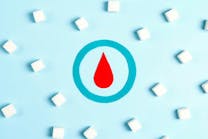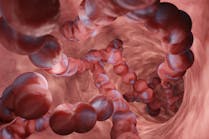Introduction
High blood pressure remains an important and prevalent problem, affecting almost one in three adults in the United States.1 Regulation of blood pressure is mainly governed by the renin-angiotensin system (RAS), also referred to the renin-angiotensin-aldosterone-system (RAAS), which has been studied for more than 100 years. Dysregulated RAAS signaling is associated with systemic arterial hypertension, kidney dysfunction, vascular atherosclerotic disease, and heart failure, which rapidly shifts from organ disease to a disorder of neurohormonal regulatory systems.2
From classic biochemistry and physiological experiments in the nineteenth century to cutting-edge molecular biology experiments conducted today, this endocrine system has been highly researched, successfully targeted for pharmaceutical drug design, and continues to be highly utilized in the clinical setting. While it was first identified and classically referred to as a highly coordinated endocrine system, recent research has identified the RAAS system as also being an autocrine and paracrine system.
The RAAS pathway is initiated by active renin being produced and released in the kidneys in response to changes in blood pressure, NaCl levels, or sympathetic nerve stimulation (Figure 1). Upon release into the circulation system, renin cleaves angiotensinogen to produce Angiotensin I (Ang I), which is an inactive decapeptide. Ang I is further processed by the angiotensin-converting enzyme (ACE), which is a membrane-bound peptidase. The resulting octapeptide, angiotensin II (Ang II), binds to transmembrane receptors and initiates several signaling pathways, including initiating the release of aldosterone from the adrenal gland. Aldosterone signaling, coupled with Ang II signaling, increases sodium uptake and stimulates vasoconstriction, resulting in elevated blood pressure.
| Figure 1. Overview of classical RAAS pathway. |
Due to its proven role in blood pressure regulation, the RAAS system has been successfully targeted for therapeutic intervention. Numerous compounds which inhibit renin, ACE, and the angiotensin II receptor have been used in the treatment of high blood pressure for the last 30 years. This article is a brief overview of the system and discussion of some of the latest molecular and physiological findings.
Classical RAAS system
Renin is a highly regulated enzyme specialized to control blood pressure, fluid volume, and salt balance. Renin is an aspartyl protease which specifically cleaves angiotensinogen. The specific location of renin in granular cells located at the base of the glomerus in the juxtaglomeruler apparatus of the kidney allows for precise monitoring and rapid response to changes in renal arteriola blood pressure and fluid flow within the nephron.3 Prorenin is synthesized and stored in vesicles until cellular signaling results in release of bioactive renin into plasma.
In contrast to the specific function and location of the renin enzyme, angiotensin I converting enzyme (ACE) is a diversely expressed dicarboxypeptidase that interacts with a wide array of substrates. Also in contrast to the highly regulated expression of renin, tight control of ACE expression levels does not appear to be as physiologically important.3 Some of the numerous substrates of ACE contribute directly to blood pressure regulation, such as bradykin and angiotensin I, while others have been associated with numerous other physiological processes. Angiotensin II binds to specific receptors to initiate a vast array of signaling pathways and physiological responses.
The best characterized Ang II receptor is the AT1 receptor. Upon Ang II binding, AT1 receptor-mediated signaling results in the production and release of aldosterone from the adrenal cortex. In addition, AT1 receptor signaling contributes to constriction of renal and systematic arterioles, increased cardiac contractility, and sodium uptake in the kidney.4,5,3
Aldosterone is a mineralocorticoid primarily regulated by Angiotensin II and plasma potassium levels. Ang II signaling releases aldosterone in response to low sodium levels and reduced extracellular fluid volume. Upon release, aldosterone binds to the mineralocorticoid receptor (MR) and translocates to the nucleus, where the ligand-receptor complex acts as a transcription factor. The resulting gene products are termed aldosterone-induced protein(s) (AIP).6 The various AIPs affect several targets, resulting in increased sodium reabsorption and potassium and hydrogen ion excretion.
Advances in biochemical and molecular research have led to increased understanding of the mechanism of AIPs. Through cDNA screening, serum glucocorticoid–regulated kinase (sgk) was identified as a serine/threonine kinase regulated by steroid mediated transcription.7 Further molecular biology and biochemistry research identified sgk as an AIP that increases epithelial sodium channel (ENaC) activity.8 Recent studies identified a possible mechanism of sgk’s effect on ENaC activity. An ubiquitin ligase, Nedd4, was identified as a substrate of sgk. Upon sgk-mediated phosphorlyation of Nedd4, the interaction of Nedd4 and ENaC is inhibited, resulting in a decrease in Nedd4-mediated ubiquitination and subsequent degradation of ENaC, therefore, increasing the number of channels at the membrane and adjusting the salt balance.9 In addition to classical genomic signaling effects of the aldosterone-MR complex, there is increasing evidence of rapid non-transcriptional effects of aldosterone that increase systemic vascular resistance as well.6
The overall physiological response of the activated RAAS signaling cascade is an increase in blood volume, and pressure. The entire cascade is tightly regulated by classical signaling feedback pathways. Prolonged or inappropriately regulated signaling results in diseases such as hypertension, cardiovascular disease, and renal disease. Most effective pharmacological treatments in heart failure, such as beta-blockers, inhibitors of angiotensin-converting enzyme, angiotensin receptor blockers, direct renin inhibitors, and mineralocorticoid receptor blockers, target the RAAS pathway.2
Renin and aldosterone are commonly used to help diagnose the underlying cause of hypertension. One advantage of a well-studied complex endocrine system is that multiple steps in the pathway allow for multiple diagnostic tools to be developed and utilized clinically. One group of disorders that can be detected by alterations in the RAS pathway is primary aldosteronism (PA). PA is a condition in which aldosterone production is inappropriately high, improperly regulated, and nonresponsive to sodium loading. PA can contribute to cardiovascular damage, hypertension, sodium retention, and suppression of plasma renin.
With the development of improved diagnostic assays over the years, the Endocrine Society now recommends that the plasma aldosterone-renin ratio (ARR) be utilized to detect PA in high-risk groups.10 The ARR has shown to be better than measuring potassium, aldosterone, or renin independently. Traditionally, plasma renin activity (PRA) was measured and used to establish the ARR. However, new assays taking advantage of specific antibodies, which are able to differentiate between prorenin and the active version of renin, have been developed to measure the direct renin concentration (DRC) in plasma. Assays directly measuring active renin concentration are advantageous, because they are less influenced by renin-directed drugs, require less sample manipulation, and are faster and easier to use overall.11
New advances and emerging new players
Over the last 20 years a paradigm shift concerning the RAS system has occurred. Advances in research have determined that all of the components necessary to synthesize biologically active Ang II are present in numerous tissues.4,12 In addition, Ang II receptors have also been found in numerous tissues, allowing for autocrine and paracrine signaling systems. There is also evidence for intracellular RAS signaling, bypassing the need for components to be secreted into the extracellular space.13
In addition to discovering a wider distribution of RAAS components than classically envisioned, recent research has also identified more components of the system. Another enzyme, named ACE 2, was discovered in 2000 and shown to hydrolyze Ang II to Ang (1-7).14 Further work has demonstrated that Ang (1-7) signals through Mas receptors and results in numerous cellular and physiological responses counter active to Ang II, including vasodilation, inhibition of vascular cell growth. and attenuation of vasoconstriction induced by Ang II signaling.13 In addition, direct signaling by renin and even prorenin has been reported, and is an active topic of research.15 As new components of the RAAS system are being identified and studied, their diagnostic and clinical importance are still being determined.
While the RAAS system has been researched for more than a hundred years and successfully targeted and utilized pharmacologically for decades, its importance in physiology and disease states is still being discovered. The involvement of RAAS in the cardiovascular and renal systems has long been appreciated. With advances in research and the identification of more players in this important biological system, more targets for diagnosis and treatments are being rapidly uncovered, and the importance of the RAAS system in other areas of physiology and disease is still being discovered.
References
- Fields LE, Burt VL, Cutler JA, Hughes J, Roccella EJ, Sorlie P. The burden of adult hypertension in the United States 1999 to 2000: a rising tide. Hypertension. 2004 Oct;44(4):398-404. Epub 2004 Aug 23. PubMed PMID: 15326093.
- Emdin M, Fatini C, Mirizzi G, Poletti R, Borrelli C, Prontera C, Latini R, Passino C, Clerico A, Vergaro G. Biomarkers of activation of renin-angiotensin-aldosterone system in heart failure: how useful, how feasible? Clin Chim Acta. 2014 Oct 25.
- Bernstein KE, Ong FS, Blackwell WL, Shah KH, Giani JF, Gonzalez-Villalobos RA, Shen XZ, Fuchs S, Touyz RM. A modern understanding of the traditional and nontraditional biological functions of angiotensin-converting enzyme. Pharmacol Rev. 2012 Dec 20;65(1):1-46.
- Atlas SA. The renin-angiotensin aldosterone system: pathophysiological role and pharmacologic inhibition. J Manag Care Pharm. 2007 Oct;13(8 Suppl B):9-20.
- Moon JY. Recent Update of Renin-angiotensin-aldosterone System in the Pathogenesis of Hypertension. Electrolyte Blood Press. 2013 Dec;11(2):41-45.
- Freel EM, Connell JM. Mechanisms of hypertension: the expanding role of aldosterone. J Am Soc Nephrol. 2004 Aug;15(8):1993-2001.
- Webster MK, Goya L, Ge Y, Maiyar AC, Firestone GL. Characterization of sgk, a novel member of the serine/threonine protein kinase gene family which is transcriptionally induced by glucocorticoids and serum. Mol Cell Biol. 1993 Apr;13(4):2031-40.
- Náray-Fejes-Tóth A, Canessa C, Cleaveland ES, Aldrich G, Fejes-Tóth G. sgk is an aldosterone-induced kinase in the renal collecting duct. Effects on epithelial na+ channels. J Biol Chem. 1999 Jun 11;274(24):16973-16978.
- Rotin D. Regulation of the epithelial sodium channel (ENaC) by accessory proteins. Curr Opin Nephrol Hypertens. 2000 Sep;9(5):529-34.
- Funder JW, Carey RM, Fardella C, Gomez-Sanchez CE, Mantero F, Stowasser M, Young WF Jr, Montori VM; Endocrine Society. Case detection, diagnosis, and treatment of patients with primary aldosteronism: an endocrine society clinical practice guideline. J Clin Endocrinol Metab. 2008 Sep;93(9):3266-3281.
- Corbin F, Douville P, Lebel M. Active renin mass concentration to determine aldosterone-to-renin ratio in screening for primary aldosteronism. Int J Nephrol Renovasc Dis. 2011;4:115-20.
- Ferrão FM, Lara LS, Lowe J. Renin-angiotensin system in the kidney: What is new? World J Nephrol. 2014 Aug 6;3(3):64-76.
- Zhuo JL, Ferrao FM, Zheng Y, Li XC. New frontiers in the intrarenal Renin-Angiotensin system: a critical review of classical and new paradigms. Front Endocrinol (Lausanne). 2013 Nov 11;4:166.
- Tipnis SR, Hooper NM, Hyde R, Karran E, Christie G, Turner AJ. A human homolog of angiotensin-converting enzyme. Cloning and functional expression as a captopril-insensitive carboxypeptidase. J Biol Chem. 2000 Oct
- Carey RM, Siragy HM. Newly recognized components of the renin-angiotensin system: potential roles in cardiovascular and renal regulation. Endocr Rev. 2003 Jun;24(3):261-271.





